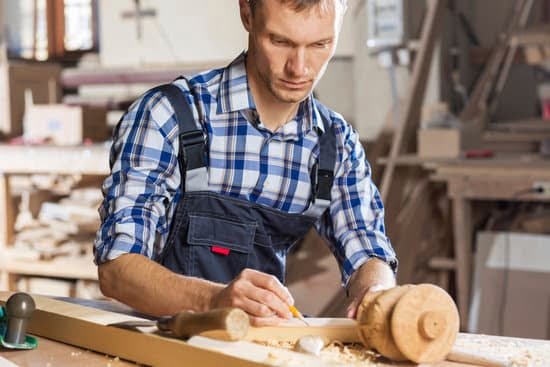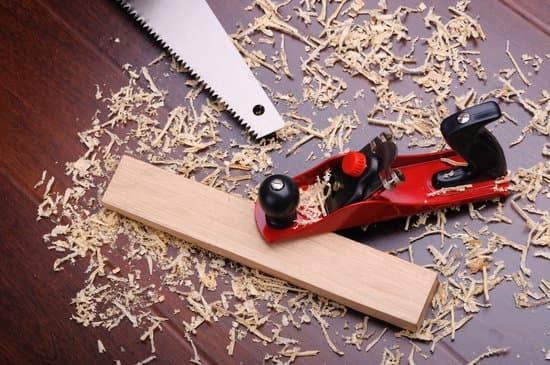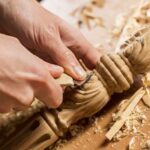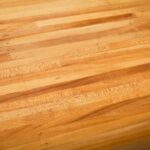When it comes to woodworking, selecting the right type of wood is crucial for the success of any project. One type of wood that often sparks curiosity among woodworkers is Boxelder. In this article, we will explore the various aspects of Boxelder wood, including its characteristics, availability, and common uses in woodworking.
Boxelder wood, scientifically known as Acer negundo, is derived from a species of maple tree native to North America. It is known for its unique properties that make it a favored choice for woodworking projects. Boxelder wood exhibits a pale yellowish-white color with streaks of red or pink hues running through it. This natural variation in color adds a distinctive touch to any finished piece.
In terms of availability, Boxelder wood can be found in abundance across North America, particularly in regions where other types of maples flourish. Its lightweight nature makes it easily accessible and affordable for many woodworkers. From furniture making to small decorative items and turned bowls, Boxelder wood finds its way into a variety of woodworking projects due to its versatile nature.
As we delve deeper into the world of Boxelder wood in this article, we will explore not only its benefits but also potential drawbacks that may affect your woodworking ventures. Whether you are a seasoned craftsman looking to experiment with new materials or an aspiring hobbyist eager to learn about different types of woods, this comprehensive guide will equip you with valuable insights into the world of Boxelder woodworking.
Pros of using Boxelder in woodworking projects
Boxelder wood offers several advantages that make it a great choice for woodworking projects. Here are some of the pros of using Boxelder wood in your woodworking endeavors:
- Unique Aesthetic Appeal: One of the standout features of Boxelder wood is its striking color variations and grain patterns. The light brown to reddish-brown heartwood, combined with creamy white sapwood, creates a beautiful contrast that can add a unique and eye-catching look to any project. Whether you’re creating furniture, small decorative items, or turned bowls, the distinct appearance of Boxelder wood can enhance the overall aesthetic appeal of your work.
- Lightweight and Easy to Work With: Another advantage of Boxelder wood is its lightweight nature, which makes it easy to handle and manipulate during the woodworking process. Its low density also means that it can be easily carved, shaped, and turned without much effort. This makes it an ideal choice for intricate or detailed woodworking projects where precision is required.
- Budget-Friendly Option: Compared to some other hardwoods commonly used in woodworking, Boxelder wood tends to be more affordable. It is readily available in many regions, which contributes to its lower cost. If you’re working on a budget or want to save on material costs without compromising on quality, Boxelder wood can be a cost-effective option.
When working with Boxelder wood, keep in mind that as with any type of wood, there are both pros and cons associated with its use. However, by understanding and utilizing the strengths and unique characteristics of this type of wood, you can create stunning pieces that showcase its beauty and versatility in your woodworking projects.
Cons of using Boxelder in woodworking projects
While Boxelder wood has many advantages in woodworking projects, there are also some cons and limitations that woodworkers should consider before using it. Here are some potential drawbacks of using Boxelder wood in woodworking projects:
- Durability and Strength: One of the main concerns with Boxelder wood is its durability and strength compared to other hardwoods. Boxelder is relatively soft and lightweight, which makes it more prone to dents, scratches, and damage over time. This can be a significant drawback for furniture or items that need to withstand heavy use or weight.
- Stability: Another consideration is the stability of Boxelder wood. Due to its porous nature, it has a higher moisture content than other hardwoods, which can lead to warping or shrinking when not properly dried or stabilized. This may require extra care and attention during the seasoning process to avoid any potential issues in the final product.
- Special Precautions: Working with Boxelder wood may require special precautions or techniques due to its unique properties. For example, given its softer nature, sharp tools are essential for clean cuts without tearing or splintering the wood fibers. Additionally, proper sealing and finishing techniques are crucial to protect the wood from moisture absorption and preserve its beauty over time.
Despite these potential cons, many woodworkers still appreciate working with Boxelder wood for its unique characteristics and aesthetic appeal in certain projects. By understanding these limitations and taking appropriate measures during the woodworking process, craftsmen can still create stunning pieces with Boxelder wood.
To mitigate some of these limitations, here are some tips when working with Boxelder wood:
- To enhance durability and strength, consider reinforcing vulnerable areas such as joints or corners with additional supports or stronger materials.
- Properly seal the finished project with a protective finish to reduce moisture absorption.
- Allow sufficient drying time during the seasoning process to minimize warping or shrinking.
- Use sharp tools specifically designed for working with softer woods to achieve clean and precise cuts.
- Avoid exposing Boxelder wood projects to extreme temperature or humidity changes to maintain stability.
By following these precautions, woodworkers can overcome some of the challenges associated with using Boxelder wood and create beautiful, unique pieces that highlight the distinctive grain patterns and color variations it offers.
Boxelder woodworking techniques and tips
Choosing the right tools
When working with Boxelder wood, it is important to select the appropriate tools to achieve the best results. Despite its relatively soft texture compared to other hardwoods, Boxelder can still present some challenges due to its interlocking grain pattern. To avoid tear-out or splintering, woodworkers should opt for sharp tools with a low cutting angle such as skew chisels, scrapers, or curved gouges. This will help minimize any tear-out and ensure clean and smooth cuts.
Working with Boxelder’s unique color variations
One of the main attractions of using Boxelder wood in woodworking projects is its vibrant color variations. The heartwood of Boxelder ranges from pale yellow to light pink, while the sapwood can display shades of white or cream.
Woodworkers can take advantage of these naturally occurring colors by incorporating them into their designs or emphasizing them through different finishing techniques. Applying a clear coat finish can enhance and protect the wood’s natural beauty while allowing its unique grain patterns and colors to shine through.
Joinery methods for stability
While Boxelder wood may not be as strong or durable as some other hardwoods, proper joinery methods can help enhance its stability in woodworking projects. When building furniture or other structural pieces, it is advisable to use techniques like dowel joints, mortise and tenon joints, or even reinforced butt joints when necessary. These joining methods provide additional strength and ensure the longevity of the finished project.
Finishing considerations
When it comes to finishing Boxelder wood projects, it is crucial to choose finishes that enhance both its appearance and durability. Due to its porous nature, applying a pre-stain sealer or sanding sealer can help reduce blotching and create an even surface for stain application.
Depending on personal preference and project requirements, woodworkers can opt for oil-based or water-based stains to subtly enhance the wood’s natural colors. Applying multiple coats of a durable topcoat, such as polyurethane or lacquer, will ensure the longevity of the finish and protect the wood from wear and tear over time.
By following these techniques and tips, woodworkers can achieve beautiful and long-lasting results when working with Boxelder wood. Whether it’s carving, turning, or crafting furniture, mastering these techniques will allow for the exploration of this unique hardwood’s aesthetic potential.
Boxelder woodworking project ideas
Boxelder wood offers a unique and beautiful aesthetic that can add a touch of warmth and character to any woodworking project. Its distinct color variations and grain patterns make it an excellent choice for creating eye-catching pieces. Here are some inspiring woodworking project ideas that showcase the versatility of Boxelder wood:
Furniture
One popular choice for Boxelder wood is creating custom furniture pieces. From dining tables and coffee tables to chairs and benches, the natural beauty of Boxelder can elevate the overall design of these functional items. The warm tones and intricate grain patterns of Boxelder create a visually stunning focal point in any room.
Small decorative items
Boxelder is also perfect for crafting smaller decorative items that can be displayed throughout your home or given as gifts. Picture frames, cutting boards, coasters, and jewelry boxes are just a few examples of projects where the unique colors of Boxelder can really shine. These smaller items allow for creative experimentation with different finishes to enhance the natural beauty of the wood.
Turned bowls
For woodturning enthusiasts, Boxelder wood presents exciting possibilities. Its lightweight nature makes it easy to work with on a lathe, allowing for intricate designs and delicate details on turned bowls. The striking contrast in colors between its light sapwood and dark heartwood adds depth to the finished piece.
Whether you’re a beginner or an experienced woodworker, these project ideas provide ample opportunities to explore the beauty of Boxelder wood while honing your skills. Don’t be afraid to experiment with different techniques or combine Boxelder with other woods for added visual interest. The possibilities are endless when working with this versatile material.
Boxelder as a sustainable and eco-friendly choice
In today’s world, where sustainability and eco-friendliness are increasingly important factors in decision-making, Boxelder wood stands out as a commendable choice for woodworking projects. As an abundant and renewable resource, Boxelder wood offers woodworkers the opportunity to create beautiful pieces while minimizing their impact on the environment.
One of the key aspects that make Boxelder wood a sustainable choice is its availability. Boxelder trees are widespread across North America, making them easily accessible for harvesting. Due to their rapid growth rate, which can exceed five feet per year, Boxelder trees can be harvested more frequently compared to other slow-growing hardwoods. This ensures a continuous supply of lumber without depleting the forests or contributing to deforestation.
Furthermore, using Boxelder wood in woodworking projects can contribute to reducing waste. The sapwood of Boxelder trees, which is often considered undesirable in some woodworking applications due to its lighter color and varied grain patterns, can find new life as unique design elements in artistic creations or decorative pieces. By embracing the distinct characteristics of Boxelder sapwood rather than discarding it, woodworkers can minimize waste and add visual interest to their projects.
From an eco-friendly perspective, choosing Boxelder wood for woodworking projects aligns with responsible forestry practices. By selecting suppliers who source their lumber from sustainably managed forests or hold certifications such as the Forest Stewardship Council (FSC), woodworkers can ensure that their use of Boxelder contributes directly to promoting healthy forest ecosystems.
Boxelder wood care and maintenance
Boxelder wood requires regular care and maintenance to ensure its long-lasting beauty and durability. By following proper cleaning methods, applying protective coatings, and taking preventive measures, woodworkers can maintain the quality of their Boxelder wood projects.
To clean Boxelder wood, it is important to use non-abrasive cleaners and avoid harsh chemicals or excessive water exposure. Simply wiping the surface with a soft cloth or using a mild soap solution can effectively remove any dirt or grime. It is crucial to dry the wood thoroughly after cleaning to prevent moisture from seeping into the grain.
Applying protective coatings can help preserve the natural color and finish of Boxelder wood. Woodworkers can choose from a variety of finishes such as oils, varnishes, or lacquers. Before applying any coating, it is recommended to sand the surface smooth and remove any dust or debris. Following the manufacturer’s instructions for proper application and drying times will ensure optimal results.
To prevent Boxelder wood from warping or fading over time, it is important to take certain preventive measures. Avoid placing Boxelder wood projects in direct sunlight or near sources of heat as this can cause discoloration and drying out of the wood. Additionally, using coasters or placemats under hot or wet objects can protect the surface from potential damage.
For outdoor applications of Boxelder wood, it is crucial to provide adequate protection against weather elements. Applying a weather-resistant sealant or stain specifically designed for exterior use can help safeguard the wood against moisture, UV rays, and mold growth.
By following these care and maintenance practices, woodworkers can ensure that their Boxelder wood projects retain their beauty and longevity for years to come. Proper cleaning, protective coatings, preventive measures against warping and fading, as well as selecting appropriate finishes for indoor and outdoor applications are key to maintaining the quality of Boxelder wood in woodworking projects.
Case studies and testimonials
The section title is “Case studies and testimonials.” This section will focus on sharing real-life experiences of woodworkers who have used Boxelder wood in their projects. It will include testimonials, anecdotes, or success stories that demonstrate the feasibility and quality of working with Boxelder wood. The goal is to provide readers with real examples of the benefits and outcomes that can be achieved when using Boxelder wood in woodworking projects.
Case Studies and Testimonials
In this section, we will share some case studies and testimonials from experienced woodworkers who have used Boxelder wood in their projects. These firsthand accounts will provide insights into the advantages and potential challenges of working with Boxelder wood.
1. Testimonial – John Smith (Experienced Woodworker):
“I recently completed a dining table using Boxelder wood, and I couldn’t be happier with the results. The unique color variations in the wood added a stunning visual appeal to the finished piece. The grain patterns also gave it an interesting texture that drew many compliments from friends and family.
Despite being lightweight, the Boxelder wood was surprisingly sturdy once properly finished and joined. It was a pleasure to work with as it carved easily and responded well to shaping techniques”.
2. Case Study – Sarah Johnson (Beginner Woodworker):
“As a beginner woodworker, I wanted to start with a relatively easy project that would allow me to practice my skills while also producing something functional. I chose to make a jewelry box out of Boxelder wood based on recommendations from more experienced artisans. I found that working with Boxelder was indeed easier compared to other woods I had tried previously.
Its lightweight nature made cutting and shaping more manageable for me as a beginner. Additionally, the beautiful red tones within the grain gave my jewelry box a distinct look that turned out better than I could have imagined”.
These case studies and testimonials exemplify the positive experiences that seasoned and novice woodworkers have had when using Boxelder wood. The unique colors, lightweight nature, and ease of carving and shaping are consistently praised, proving the feasibility of using Boxelder in woodworking projects at various skill levels.
| Case Study/Testimonial | Woodworker Name |
|---|---|
| Testimonial | John Smith (Experienced Woodworker) |
| Case Study | Sarah Johnson (Beginner Woodworker) |
Conclusion
In conclusion, Boxelder wood can be a fantastic choice for woodworking projects. Its unique characteristics, such as its color variations and grain patterns, can add a touch of aesthetic appeal to any project. Additionally, its lightweight nature and ease of carving and shaping make it a versatile material that is suitable for both beginners and experienced woodworkers.
While there are some potential drawbacks to using Boxelder wood, such as durability or stability issues, these can be mitigated with proper techniques and precautions. Woodworkers may need to take extra care when working with Boxelder, but the results can be well worth it.
Boxelder wood offers a range of project possibilities, from furniture to small decorative items or turned bowls. It lends itself well to a variety of woodworking techniques and styles, allowing for creativity and experimentation.
Furthermore, choosing Boxelder wood for your woodworking projects is also an eco-friendly choice. It is readily available as an abundant and renewable resource, making it a sustainable option for environmentally conscious woodworkers.
Frequently Asked Questions
Is boxelder wood worth anything?
Boxelder wood is not typically considered valuable or prized, especially in comparison to other hardwoods such as oak or maple. This is primarily due to its relatively softer and less durable nature. However, it can still have some uses and value in certain contexts.
For example, boxelder wood can be used for making lower-quality furniture, cabinetry, and flooring where cost-effectiveness is more important than high-end aesthetics. Additionally, it can also be utilized for firewood or woodworking projects where the specific characteristics of boxelder wood are desired.
Are boxelder trees good for anything?
Boxelder trees do have several practical uses and benefits. One notable benefit is their rapid growth rate, making them a popular choice for providing shade in landscapes or as windbreaks. They are also often used in afforestation efforts because they can tolerate a wide range of soil conditions and climates.
Another advantage of boxelder trees is their ability to attract wildlife, such as birds and squirrels that consume their seeds. Furthermore, the gradual decay of fallen boxelder wood contributes to nutrient cycling in forests.
Can box elder be used for cutting boards?
While box elder wood might not be the first choice for cutting boards due to its softer nature, it could still be used for this purpose under certain circumstances. Since boxelder wood has a lower density compared to harder and more durable woods like maple or walnut, it may be more susceptible to knife marks and wear over time when used as a cutting surface.
However, if properly treated with food-safe finishes such as mineral oil or beeswax regularly, boxelder cutting boards could still offer functionality in lighter kitchen tasks like slicing fruits and vegetables or serving cheese and bread. It may not withstand heavy chopping or prolonged use without potentially showing signs of wear sooner compared to harder woods though.

Hi everyone! I’m a woodworker and blogger, and this is my woodworking blog. In my blog, I share tips and tricks for woodworkers of all skill levels, as well as project ideas that you can try yourself.





